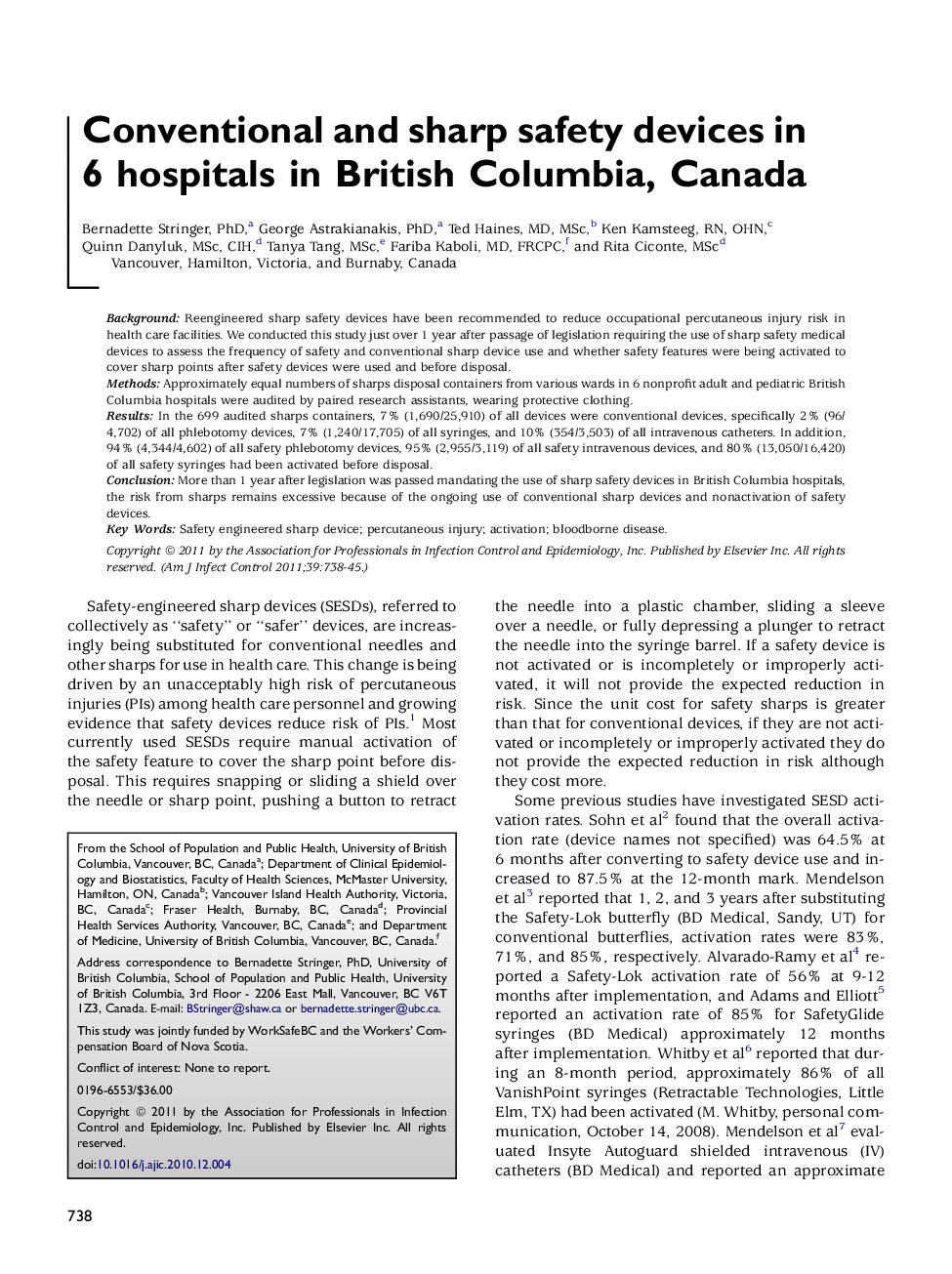| Article ID | Journal | Published Year | Pages | File Type |
|---|---|---|---|---|
| 2637809 | American Journal of Infection Control | 2011 | 8 Pages |
BackgroundReengineered sharp safety devices have been recommended to reduce occupational percutaneous injury risk in health care facilities. We conducted this study just over 1 year after passage of legislation requiring the use of sharp safety medical devices to assess the frequency of safety and conventional sharp device use and whether safety features were being activated to cover sharp points after safety devices were used and before disposal.MethodsApproximately equal numbers of sharps disposal containers from various wards in 6 nonprofit adult and pediatric British Columbia hospitals were audited by paired research assistants, wearing protective clothing.ResultsIn the 699 audited sharps containers, 7% (1,690/25,910) of all devices were conventional devices, specifically 2% (96/4,702) of all phlebotomy devices, 7% (1,240/17,705) of all syringes, and 10% (354/3,503) of all intravenous catheters. In addition, 94% (4,344/4,602) of all safety phlebotomy devices, 95% (2,955/3,119) of all safety intravenous devices, and 80% (13,050/16,420) of all safety syringes had been activated before disposal.ConclusionMore than 1 year after legislation was passed mandating the use of sharp safety devices in British Columbia hospitals, the risk from sharps remains excessive because of the ongoing use of conventional sharp devices and nonactivation of safety devices.
